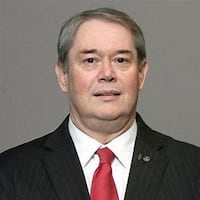The Envision Lebanon draft plan was the focus of a recent public hearing before Lebanon City Council, and that body will consider final adoption of the plan at its meeting at 7 p.m. today.
City Planner Greg Orosz said the vision for Lebanon is “authentic small-town living.”
He said the plan anticipates steady, slow population growth of about 1% to 1.5% a year for an estimated population of 26,205 in 2040. From 2000 to 2020, he said the population increased from 16,952 to 20,814, averaging 1.12% a year.
The plan outlined six goals of protecting community character; ensuring economic vitality; reinforcing neighborhoods; leveraging natural, recreational and community amenities; improving mobility options; and building on success. From that, Orosz said 91 action steps were identified to reach those goals.
The plan focuses on four areas of Lebanon for future development that are based on utility service area boundaries. Orosz said the future land use would be based on areas most likely to be serviced by the city. Those areas include:
- Miller Road: There is another 416 acres as a continuation of Ohio 48 westward towards Broadway.
- Columbus Avenue: About 228 built-out acres, predominantly commercial, serving as the major connector to the northeast of the city.
- Pleasant Square: Another 119 acres of neighborhood residential immediately adjacent to downtown.
- Interstate 71/Ohio 48 Interchange: Another 391 acres available with large parcels at the city’s southern crossroads that serves as a regional gateway.
Each of the planning areas and goals have specific action steps. Among those steps are continuing the implementation of the downtown plan; updating zoning and land use codes and ensuring new development considers quality and sense of place.
Other action items include infill residential development on vacant properties; encouraging local business expansion with incentives and creating economic opportunities by increasing diversity within the workforce.
Orosz also said the city needs to create two “pad-ready” sites for its industrial recruitment efforts with REDI Cincinnati. He said the plan recommends the city identify and invest in two large sites of 30 or more acres, reducing the speed to market as well as locating these sites near existing infrastructure with access and acceptable grading. Orosz said the city should create innovation districts for mixed employment to support innovation-based businesses.
The plan, which has a focus of reinforcing neighborhoods, noted Lebanon has a greater variety of housing types compared to the county and state. More than 35% of the city’s housing stock is made up of mixed housing types, compared to 17% for the county, the plan said.
The plan also recommended the encouragement of quality infill development closer to the city center, developing residential appearance guidelines, and that new development on the outskirts of the city should prioritize buffering of existing residents and protection of natural resources.
During the planning process, there were two rounds of public engagement featuring in-person events, virtual workshops, and online engagement. A series of additional interviews were conducted with local organizations around the topic of diversity and inclusion.
“This can help us to get grants,” said Councilwoman Wendy Monroe. “It was a fun process, interesting and very thorough to help Lebanon grow.”
The plan’s vision statement notes the city’s “deep respect for its history and view toward the future, and that the community capitalizes on viable economic opportunities to enable strong fiscal health and provide a high quality of life.”
“It was encouraging to see the participation of the community,” said Councilman Adam Mathews. “It’s good to have a plan.”
Councilman Mike Cope agreed, adding that “it was very thorough.”
About the Author
